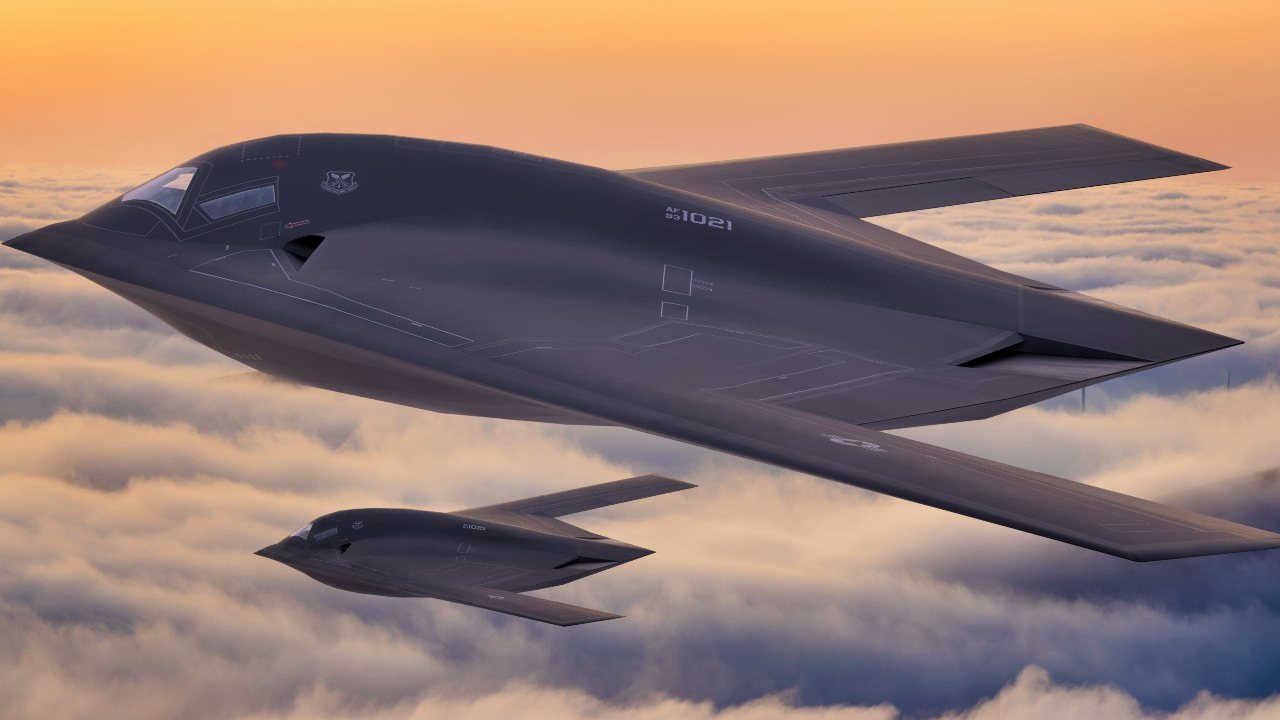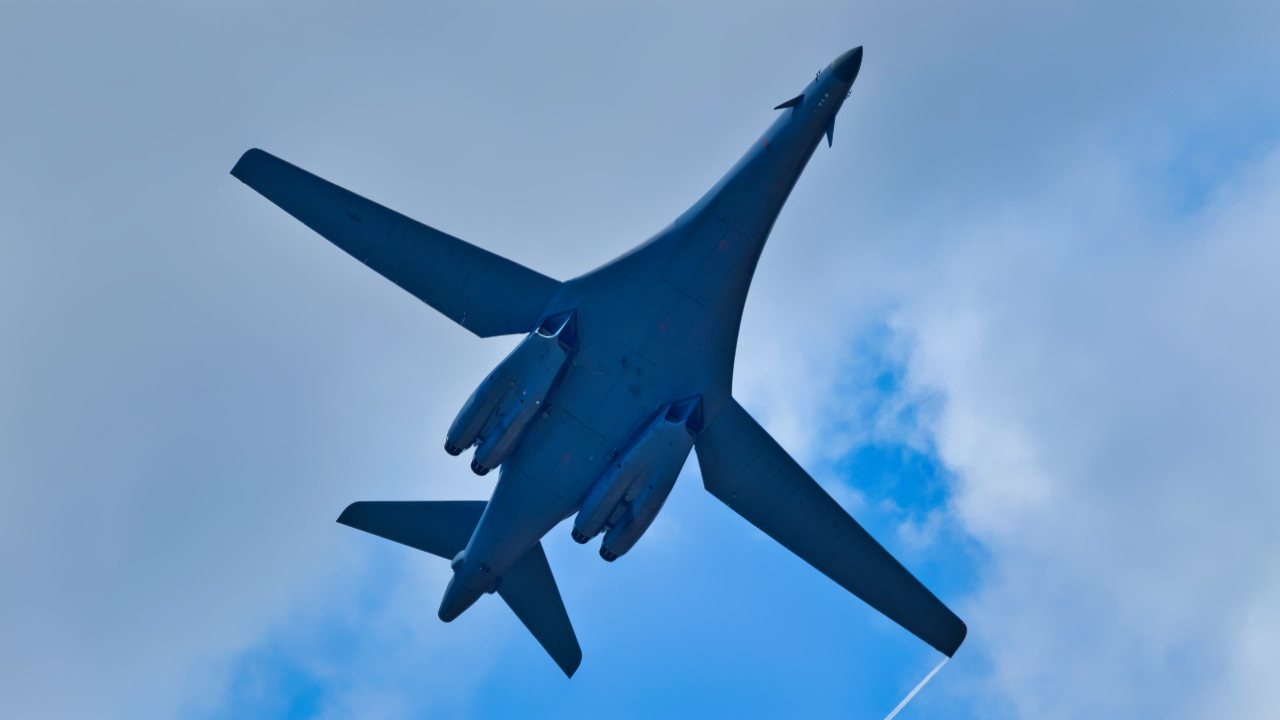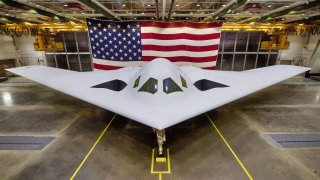B-21 Raider: Why the Air Force Needs This New Stealth Bomber
The B-21 Raider will be slotted for hard, first-strike targets where stealth and advanced performance will be key; as far as easier missions in an air superiority/air dominance environment, the B-52 Stratofortress will fill the gap.
The U.S. Air Force fields the most advanced combat aircraft in the world. Whether it is the F-22 Raptor stealth fighter jet, the B-2 Spirit stealth bomber, or the F-35 Lighting II stealth fighter jet, the Air Force knows what combat power is necessary to remain at the top.
But the world is constantly changing, and new challenges require new solutions. When it comes to strategic bombing, the Air Force chose the B-21 Raider stealth bomber to take into the future.
The B-21 Raider
In December 2022, the Air Force revealed the B-21 Raider in a grandiose ceremony.
Although its precise capabilities remain classified, Secretary of Defense Lloyd Austin provided some insight on what the new strategic bomber will be capable of in his remarks.
“Let's talk about the B-21's range. No other long-range bomber can match its efficiency. It won't need to be based in-theater. It won't need logistical support to hold any target at risk, Let's talk about the B-21's stealth. Fifty years of advances in low-observable technology have gone into this aircraft. And even the most sophisticated air-defense systems will struggle to detect a B-21 in the sky. Let's talk about the B-21's durability. You know, we really don't have a capability unless we can maintain it. And the B-21 is carefully designed to be the most maintainable bomber ever built,” Austin said.
However, the B-21 Raider’s advanced capabilities don’t come cheap. According to current estimates, the Air Force expects to pay approximately $750 million for each aircraft, thus immediately making the strategic bomber one of the most expensive combat aircraft in history. That cost can decrease with improvements in production and a larger order of aircraft.
B-21 and Flying Into the Future
With the counterterrorism and counterinsurgency campaigns of the past two decades over, the U.S. military is once more focusing on near-pear threats like China and Russia. Besides the obvious military differences between terrorist organizations like al-Qaida and the Islamic State and nation-states like China and Russia, a major consideration is air defenses.
Both the Chinese and Russian (even in their current state) militaries have potent air defense capabilities, particularly when it comes to Anti-aircraft/Aerial Denial (A2/AD). Achieving air superiority over the battlefield or conducting strategic deep strikes in such a non-permissive environment is extremely difficult.

In order to counter the Chinese and Russian advanced air defense systems, the Pentagon is planning to buy approximately 100 B-21 Raiders. In addition, the Air Force wants to keep in service about 60 upgraded B-52 Stratofortress bombers. Although aging—it first flew in 1952 and has flown for over 72 years—the B-52 Stratofortress is a capable strategic bomber. The latest version (“H”) will field major structural and technological upgrades, including improved engines, better radar, and stronger pylons to carry stand-off hypersonic munitions. Importantly, retaining the B-52 Stratofortress into service will allow the Air Force to divide labor.

The B-21 Raider will be slotted for hard, first-strike targets where stealth and advanced performance will be key; as far as easier missions in an air superiority/air dominance environment, the B-52 Stratofortress will fill the gap.
In all of this, the B-1 Lancer and B-2 Spirit bombers are getting the short end of the stick as the Air Force plans to retire the strategic bombers once the B-21 Raider enters service.
About the Author
Stavros Atlamazoglou is a seasoned defense journalist specializing in special operations and a Hellenic Army veteran (national service with the 575th Marine Battalion and Army HQ). He holds a BA from Johns Hopkins University and an MA from the Johns Hopkins School of Advanced International Studies (SAIS). His work has been featured in Business Insider, Sandboxx, and SOFREP. Email the author: [email protected].


